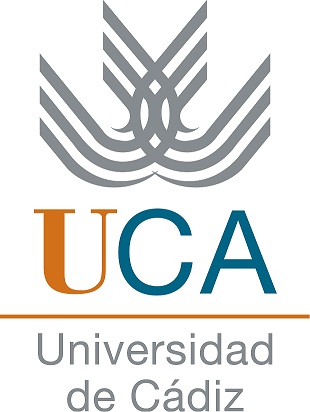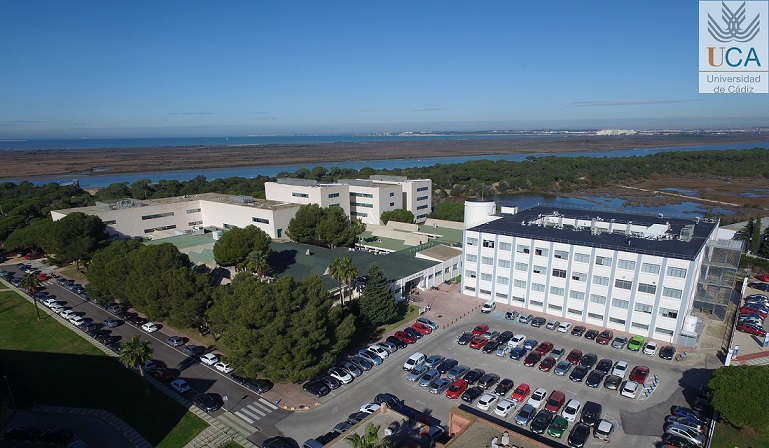
Advanced Division of Electron Microscopy (DME-UCA) facility is part of the Central Facilities for Science and Technology at Cadiz University. This service, certified under both ISO 9001 and ISO 14001 Environmental Management criteria, was created in 1985 as an instrument to boost the research developed by research groups at the University. The vision of these Facilities in general and particularly of the Electron Microscopy Division has always been the continuous improvement in organizational, equipment resources and technical staff qualification issues, to ensure high quality services. Advanced DME-UCA Facility includes two advanced TEM microscopes, Sample preparation Laboratory and a Data Analysis Facility.

Fully equipped to face all the different steps required to obtain electron-transparent samples from all kind of samples (metallic, ceramic, semiconductors, polymers, nanoparticles, hybrids, biological samples…), including the following elements: Optical microscopes, inverted metallographic microscopes, stereo-microscopes, Disk and diamond wire cutters, Mechanical polishing machines, Mounting presses, Thickness measurement instruments, Disc punchers (for metallic samples), Ultrasonic disc cutters, Tenupol for electrochemical etching, Dimplers, Ionic Milling Equipment (2 PIPs units), High Performance 1050 ionic mill Fischione TEM Mill, High Precision Sputtering (C, Cr, Au, AuPd), Fischione 1020 Plasma Cleaner (Ar/O2), Gatan Solarus Plasma Cleaner (H2/O2), Critical Point Dryer, Trimmers, Ultramicrotomes for Materials Science samples and Biological samples.
(i) Ultra High Resolution TEM/STEM FEI Cubed Titan Themis 60-300.
Double Cs aberration-corrected Themis scanning transmission electron microscope (S/TEM) was installed at Cadiz University in 2015. It is aligned to work at 60, 80, 200 and 300kV.This allows tuning the operation conditions to optimize image or energy resolution; signal to noise ratio or beam-damage effects.
The system is equipped with Energy Dispersive X Ray and Electron Energy Loss Spectroscopy techniques. In particular the equipment has a Super X detector, which consists of a 4-windowless detector that can be used independently, and Ultra High Resolution Energy Filter (Gatan Quantum ERS) which allows working in Dual-EELS mode (Core Loss/Low Loss). Simultaneous X-EDS and EELS spectra can be acquired to characterize not only the system composition but also to monitor the electronic structure of the analyzed materials. The instrument is also equipped with a monochromator that combined with the X-FEG gun and ultra-high stability HT tank allows recording Electron Energy Loss Spectra (EELS) with energy resolutions in the order of 100 meV.
The large gap pole piece, allows both very large tilt angles (up to 80º) and implementing a variety of holders for special experiments. Cubed Titan Themis at Cadiz University is equipped with packages software that allows for totally automated Electron Tomography experiments. In particular electron tomography can be combined with the spectroscopy X-EDS capabilities (e.g. separate recording of each of the 4 detectors) to allow for 3D mapping of element distribution with resolution at the nanoscale. Moreover, recording simultaneously up to 4 different STEM signals (BF, DF2, DF4 and HAADF) opens the way to multi-signal electron tomography, a quite novel field in Electron Microscopy which may help solving material-dependent electron tomography problems related either to their composition or structure.
The system is equipped with a 4 segment detector (DF4) which allows applying quite novel imaging techniques as it is the case of Differential Phase Contrast Imaging (DPC) and Integrated Differential Phase Contrast Imaging (i-DPC).
Additionally the system is equipped with anaerobic transfer holder which allows avoiding the contact with air of samples which are sensitive to physical of chemical modifications by interaction with air components. The use of this holder involves sample preparation under controlled atmosphere environment (e.g. Globe Box). The characterization of a large number of samples may benefit from avoiding oxidation, hydration or carbonation processes, which may take place after contact with air at low temperatures.
(ii) High Resolution TEM/STEM FEI Talos F200X
A last generation non-corrected microscope for angstrom-scale structural (2D and 3D) and analytical (2D and 3D) characterization studies operated at 80 and 200kV. The system is equipped with a High-Brightness X-FEG electron gun and a high efficiency, high sensitivity Super X-EDS analytical attachment incorporating a 4-windowless detector system around the sample holder that provides a collection solid angle of up to 1 srad. The system has 4 STEM Detectors (Bright-Field, 2 Dark Field Detectors (DF2, DF4) and a High Angle Annular Dark Field (HAADF)), where DF4 is made of 4 segments. This allows applying quite novel imaging techniques as it is the case of Differential Phase Contrast Imaging (DPC) and Integrated Differential Phase Contrast Imaging (i-DPC).
The system is equipped with software for automated electron tomography. This software includes an implementation of so-called “Batch tomography”, i.e. recording, in an automatic way, series of electron tomography experiments at sites pre-selected by the user. This option becomes crucial to obtain 3D information at the nanoscale with statistical significance.
The large gap pole piece, allows both very large tilt angles (up to 80º) and implementing a variety of holders for special experiments as for example the anaerobic transfer holder. This specific holder allows avoiding the contact with air of samples which are sensitive to physical of chemical modifications by interaction with air components. The use of this holder involves sample preparation under controlled atmosphere environment (e.g. Globe Box). The characterization of a large number of samples may benefit from avoiding oxidation, hydration or carbonation processes, which may take place after contact with air at low temperatures
This microscope, with capabilities just slightly below those of Cubed Titan Themis 60-300, constitutes a key element to properly screen characterization problems which actually will require the use of the ultra-resolution capabilities of the later. The equipment will be installed at Cadiz University by June 2018.
A variety of hardware and specially software is available for handling data recorded at the Advanced DME-UCA for a correct and in-depth analysis of those data. It is important to highlight at this point that UCA scientists have developed tools for these tasks which are currently available to the whole scientific community through servers hosted at UCA.
- Software for image and spectroscopy (EELS and X-EDS) analysis. Including Exit Wave Reconstruction using through-focus series and software dedicated to image simulation
- Software for Electron Tomography reconstruction visualization and analysis
- On-line TEM-UCA Server, hosted at UCA containing the applications EJE-Z and RHODIUS (http://www2.uca.es/dept/cmat_qinor/catalisis/tem-uca-server.htm), useful for structure visualization, image and diffraction data analysis as well as for building complex supercells necessary for simulation purposes.
- How Transnational Access works?
- Request for access
-
Installations
- Access to StEM Stuttgart
- Access to ERC Juelich
- Access to CEMES Toulouse
- Access to LPS Orsay
- Access to EMAT Antwerp
- Access to OXTEM Oxford
- Access to WEMS Cambridge
- Access to K7 Ljubljana
- Access to FELMI-ZFE Graz
- Access to LMA Zaragoza
- Access to Advanced DME Cadiz
- Access to IC-EM Krakow
- Access to CMAL Chalmers
- Access to Gemini Centre Trondheim
- Access to Beyondnano EM lab Catania
